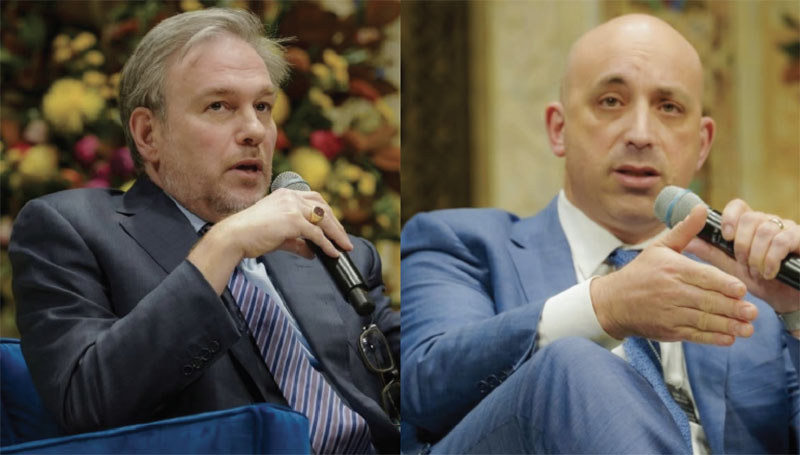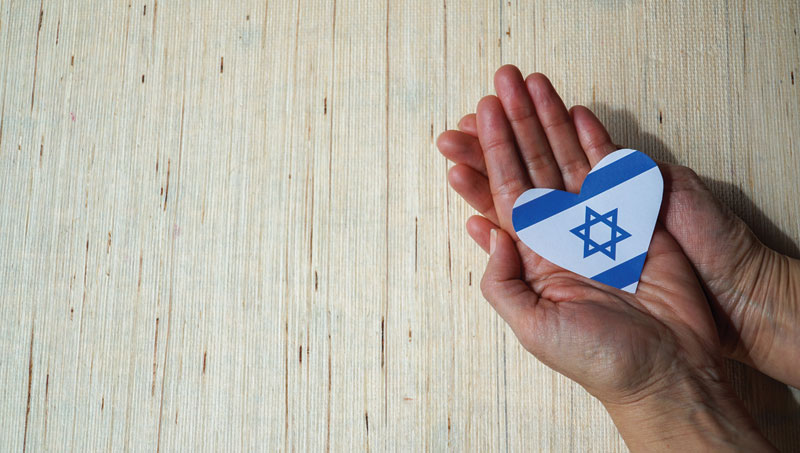Italian comedian-director Roberto Benigni was mortified by the journalist’s accusation at Cannes. How, the reporter queried, could he be so tacky as to make a comedy about the Holocaust?
Sweet, effusive Benigni is still pained by the question, though his Chaplinesque fable, “La Vita e Bella” (“Life is Beautiful”), won the grand prize at Cannes and the Best Jewish Experience Award at the Jerusalem International Film Festival.
In the movie, he portrays an Italian Jew, a sad clown of a man who protects his son in a concentration camp by inventing an elaborate game. The film, he says, was inspired by his father’s suffering in a German labor camp; by his friendship with the late Holocaust author Primo Levi; and by his obsessive rereading of Levi’s Auschwitz memoir.
So while the Cannes moderator ignored the reporter’s question, Benigni burned to answer, as he did during a recent telephone interview with The Jewish Journal. “There is a prejudice about comedians,” says the 45-year-old filmmaker, who is known as the Italian Woody Allen. “I would be prejudiced, too, if I heard that someone had made a comedy about the Holocaust. But my film is not a comedy. It is a real tragedy. I think it works because of the story. My duty was to tell a beautiful story. And, in my heart, I know the story is beautiful.”
In “La Vita e Bella,” Guido (Benigni) is a charming buffoon who woos and wins Dora (played by Benigni’s wife, Nicoletta Braschi), the fiancee of the local fascist official . Along the way, he impersonates the author of the “Manifesto of Racist Scientists,” showing off his “pure Aryan” belly button. He carries Dora off from her engagement party on a horse that has been defaced with anti-Semitic graffiti; they marry and have a son in the shadow of the Holocaust. When the boy asks about a sign, “No Jews or Dogs Allowed,” Guido says the family bookstore will henceforth prohibit spiders and Visigoths.
Benigni says it was no accident that he decided to film “La Vita e Bella” in Arezzo, his father’s birthplace. The director first learned of the Holocaust from his father, Luigi, a simple Tuscan farmer so poor that the entire family slept in one bed when Benigni was young. Every evening, the director recalls, his father obsessively recounted his World War II experiences. In 1943, Luigi was an Italian soldier arrested by the Germans after the ousting of Mussolini. In a work camp in the area of Erfurt, he built weapons amid stench, starvation and the death of most of his friends. When he returned to Tuscany as a living skeleton, his own wife did not recognize him.
“Every night, my father had nightmares, and also the need to tell his story,” Benigni says. “But when he saw that the stories scared us, he began telling them in a different way, with lightness, even with humor.” The elder Benigni would comically mimic the first time he saw his wasted body in a mirror, for example. “When he began telling the story in this new way, he was free,” the director says. “He stopped having nightmares. He was also protecting the purity of his children because he knew we were innocent.”
“La Vita e Bella,” too, is about a father protecting the purity of his son.
Benigni got the idea for the Holocaust film three years ago, while he was rereading Primo Levi’s “If This is a Man.” “I couldn’t sleep, and I was telling everyone about the book,” says the Italian superstar, who is best known in the States for his manic performances in Jim Jarmusch movies. “I wanted to know it better, but I couldn’t.”
Benigni then wondered if he could put the body of a clown in the most extreme situation — in a concentration camp — and was immediately enthralled and terrified by the concept. He was keenly aware of the risks; he did not want his film to make light of the Holocaust.
Thus, Benigni carefully consulted with survivors groups; he listened to dozens of personal histories and read myriad books on the Shoah. The Center for Contemporary Jewish Documentation helped Benigni’s set designer re-create the concentration camp in the remains of an abandoned factory. Survivors donated patches of their camp uniforms to help designers create the costumes. Historians and survivors were on set to make sure the gas chambers were accurate.
Despite this attention to detail, however, Benigni wanted the film to be more dreamlike than documentary. “I realized that no movie could capture the horror of the Holocaust, so I didn’t want people to look for reality in my movie,” he says.
When Benigni won the prize at Cannes, he was in prime clown form. He ran up to the stage and kissed the feet of juror Martin Scorsese, then kissed most everyone else in sight.
He was far more nervous, however, during the first screening in Jerusalem; his fears were assuaged when viewers burst into cheering applause. The one woman who protested the movie was unceremoniously booed, Benigni recalls.
The Israeli response meant everything to him. “I spent all my energy, my body and soul on this movie,” he said. “It is my contribution to the Holocaust victims.”
“La Vita e Bella,” which is endorsed and acclaimed by The Jewish Federation’s Los Angeles Museum of the Holocaust, opens today at Laemmle’s Monica 4-Plex, the Landmark Cecchi Gori Fine Arts Theatre in Beverly Hills, and Landmark’s Westside Pavilion Cinemas.






















 More news and opinions than at a Shabbat dinner, right in your inbox.
More news and opinions than at a Shabbat dinner, right in your inbox.